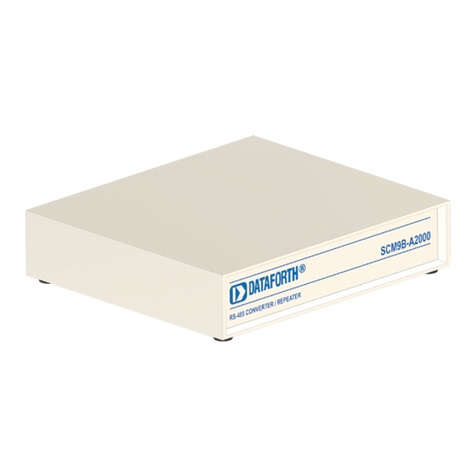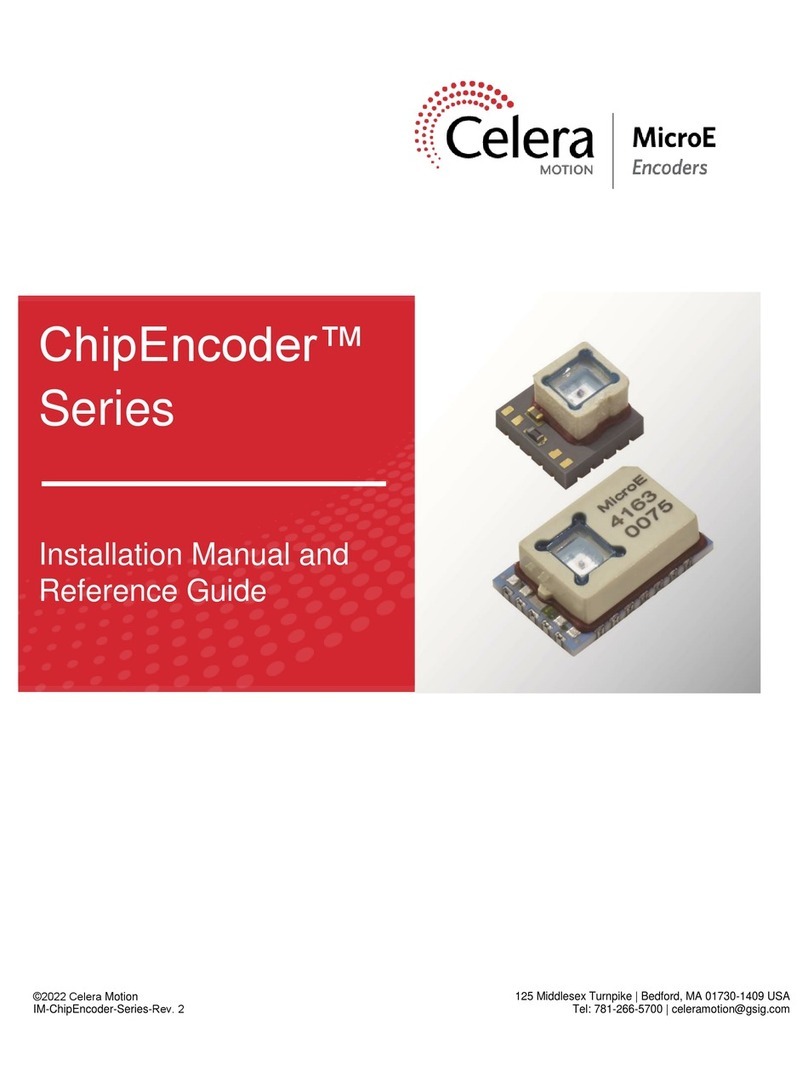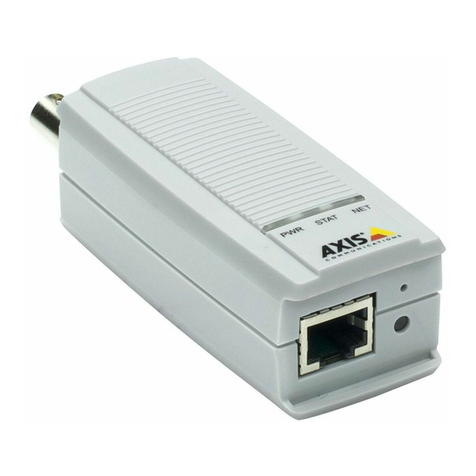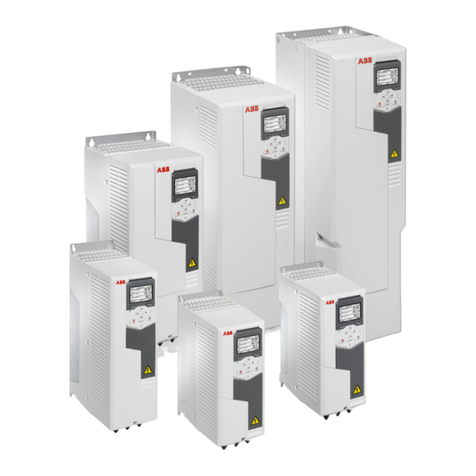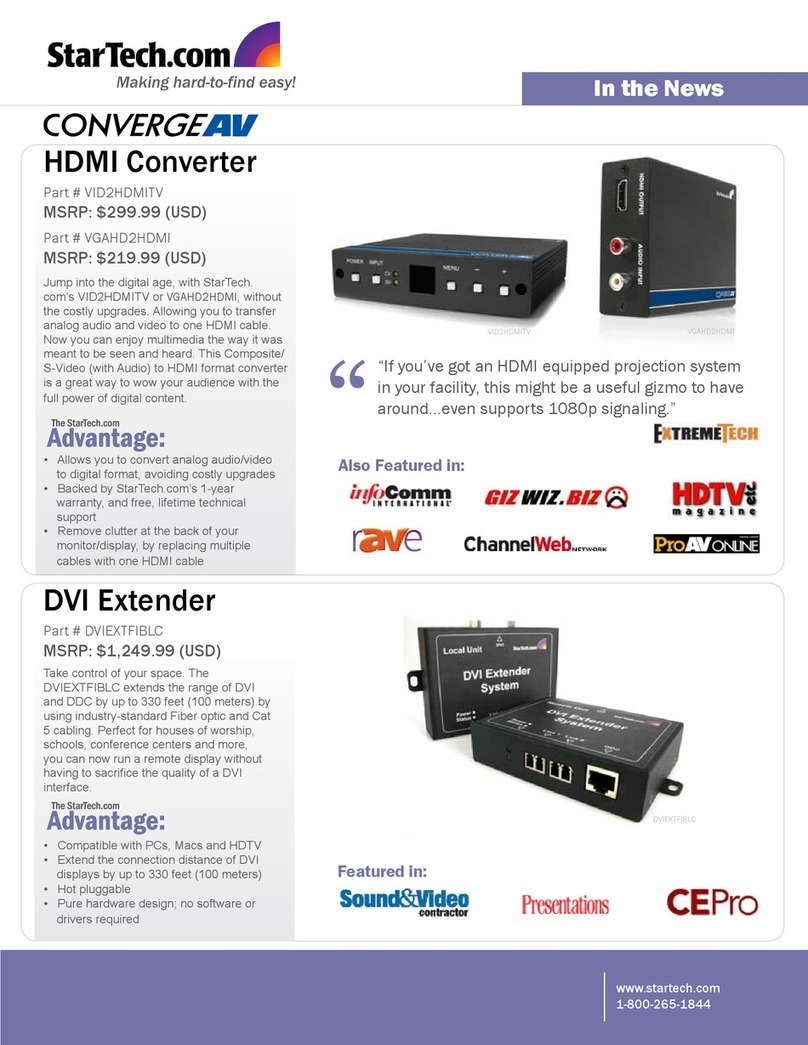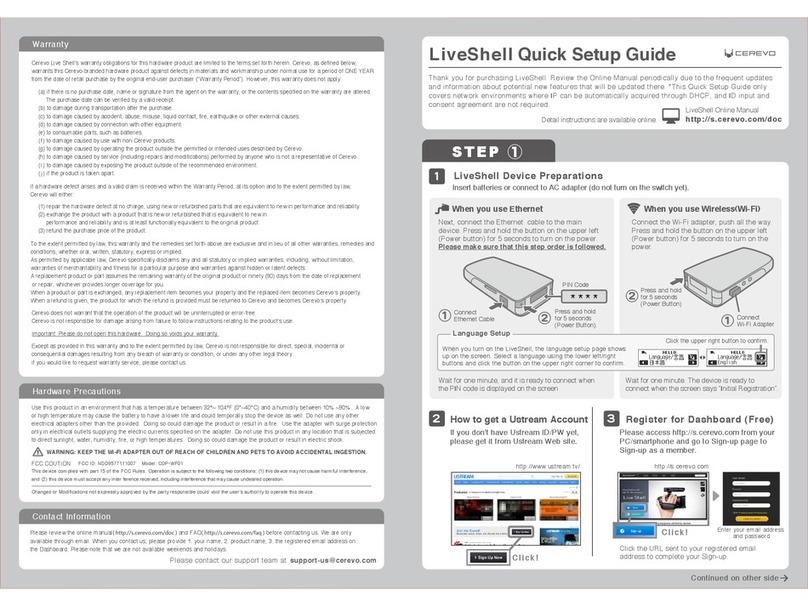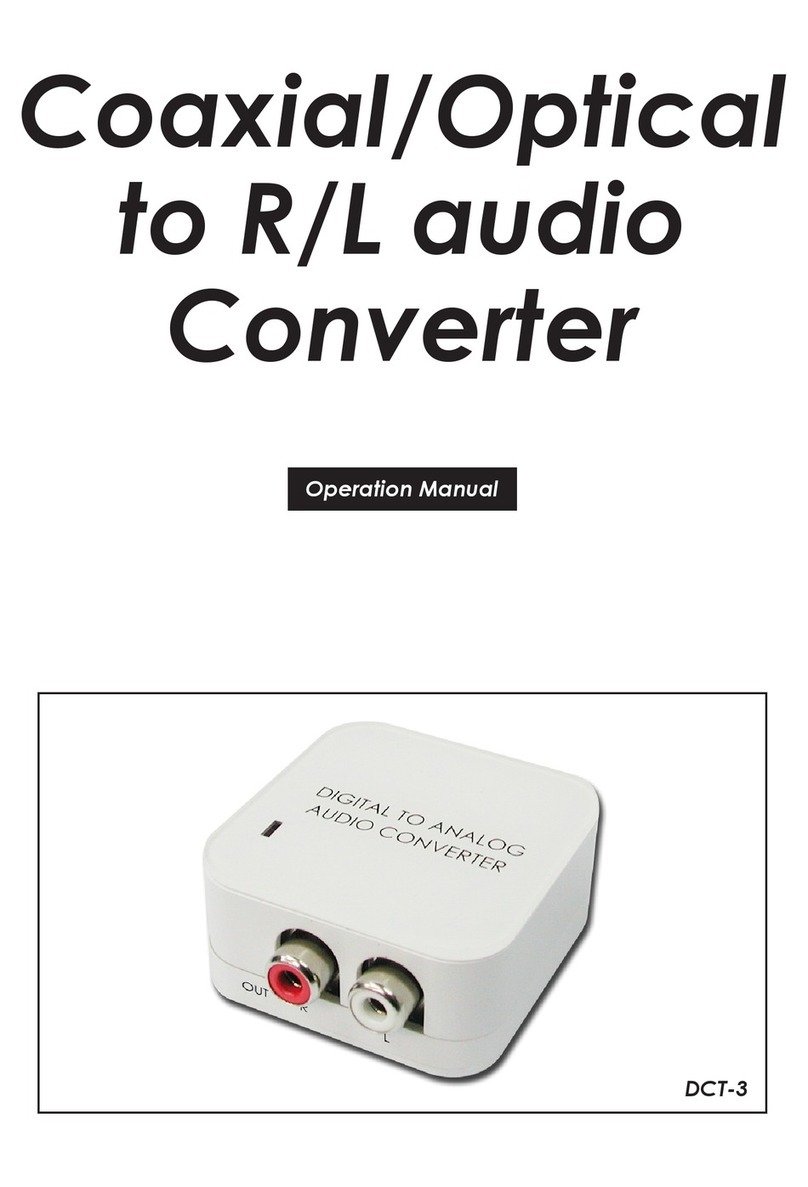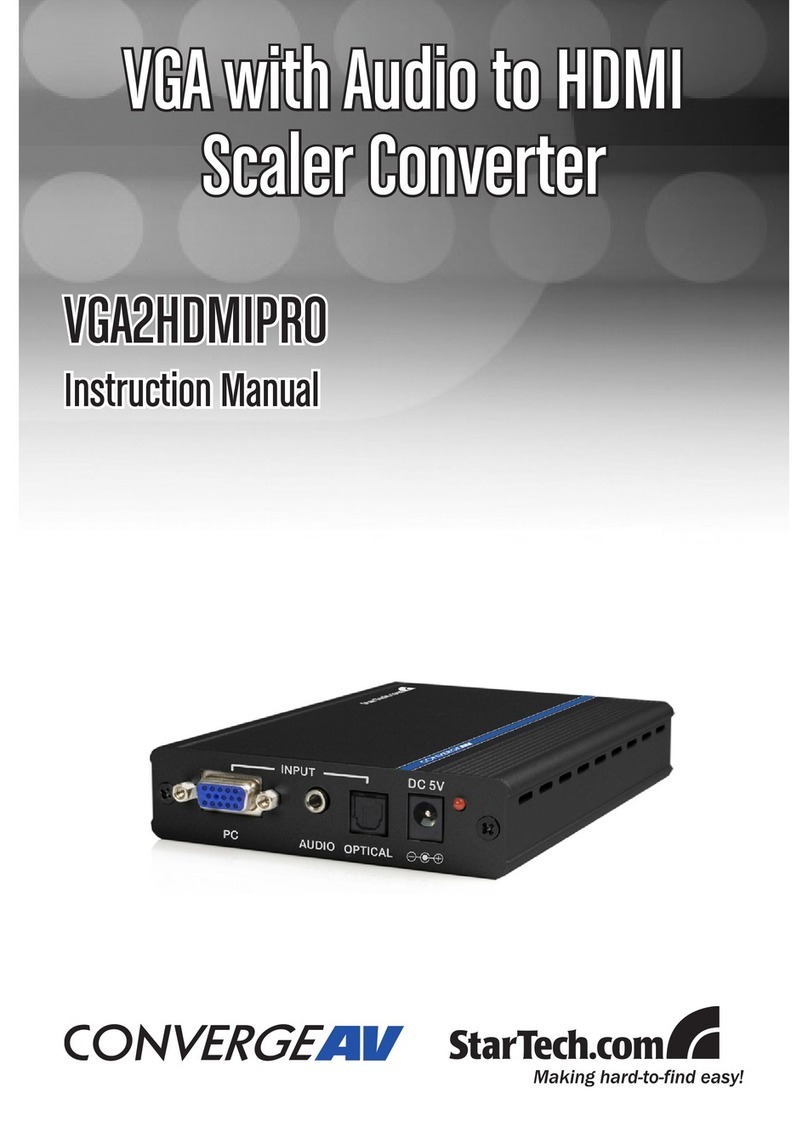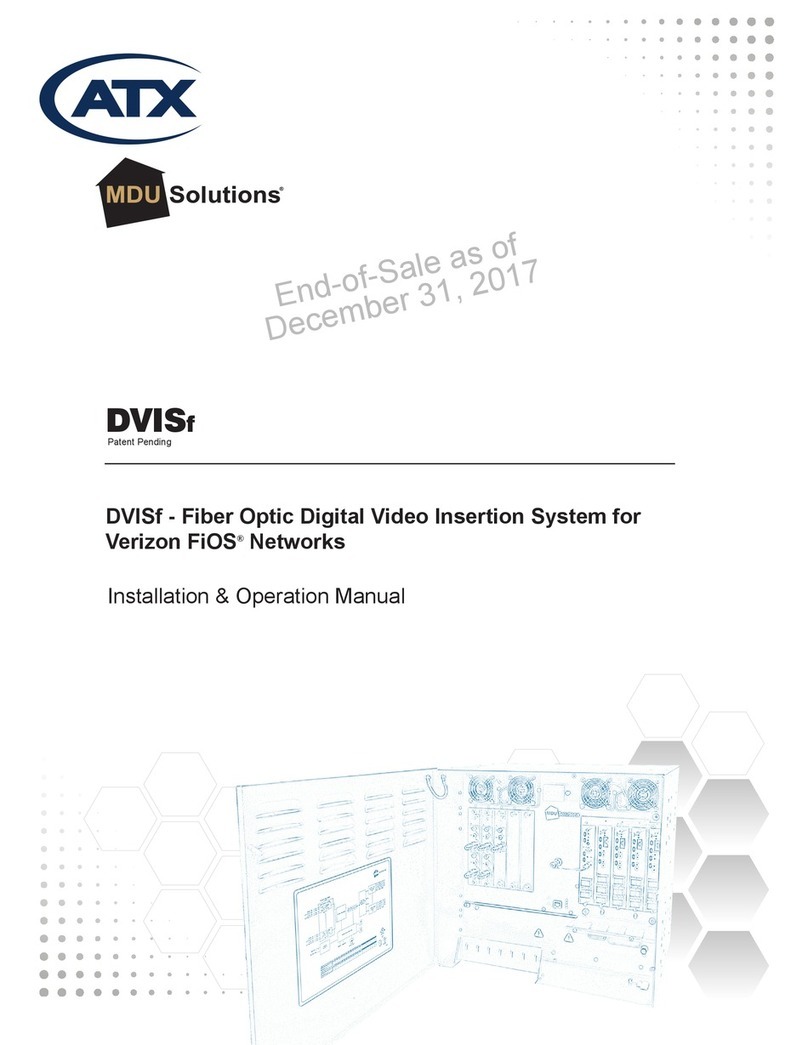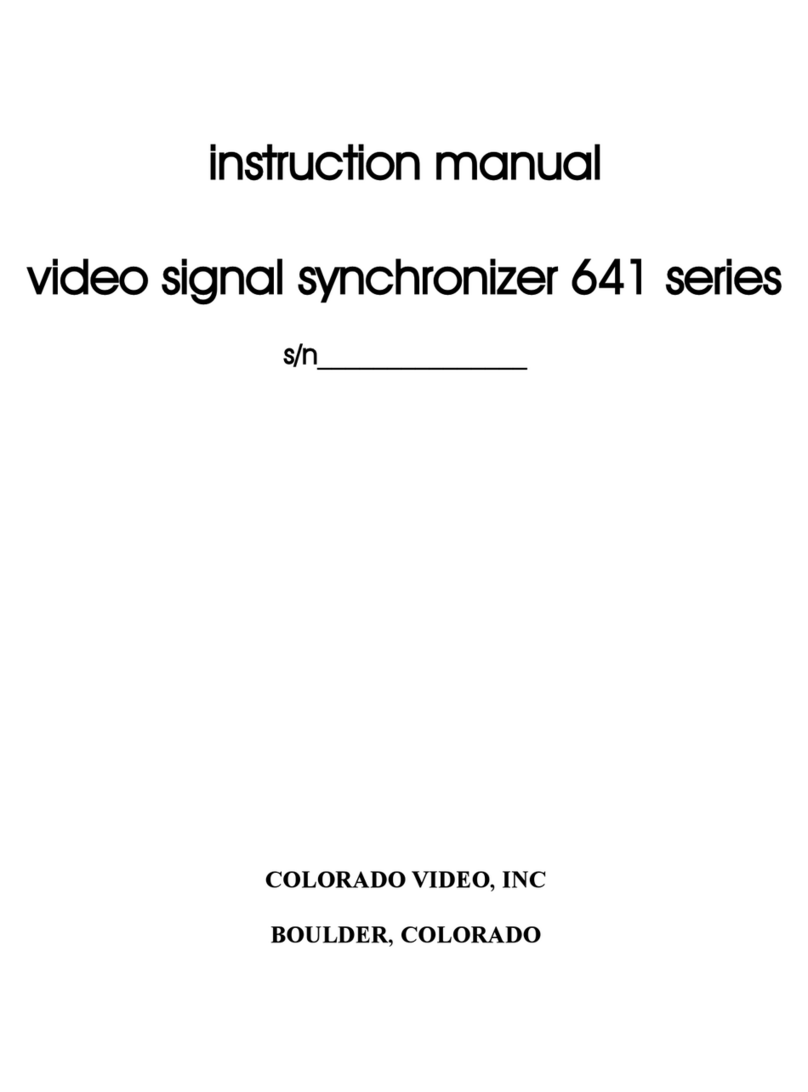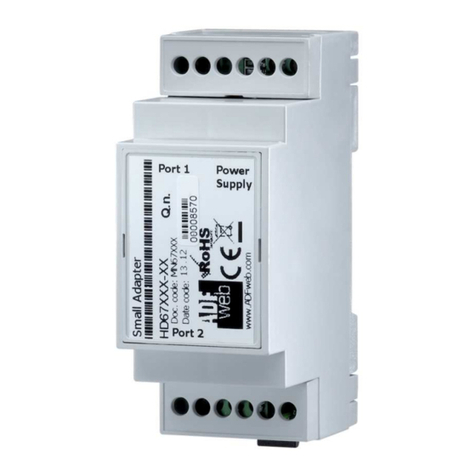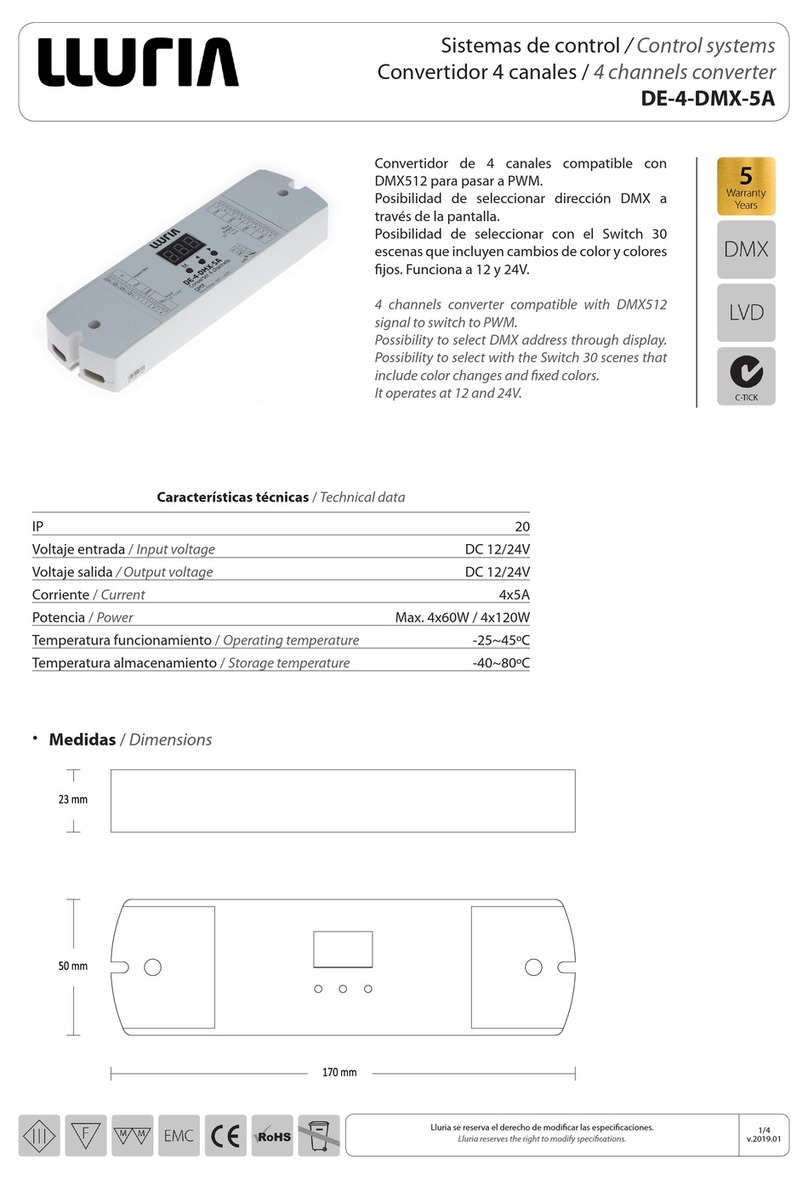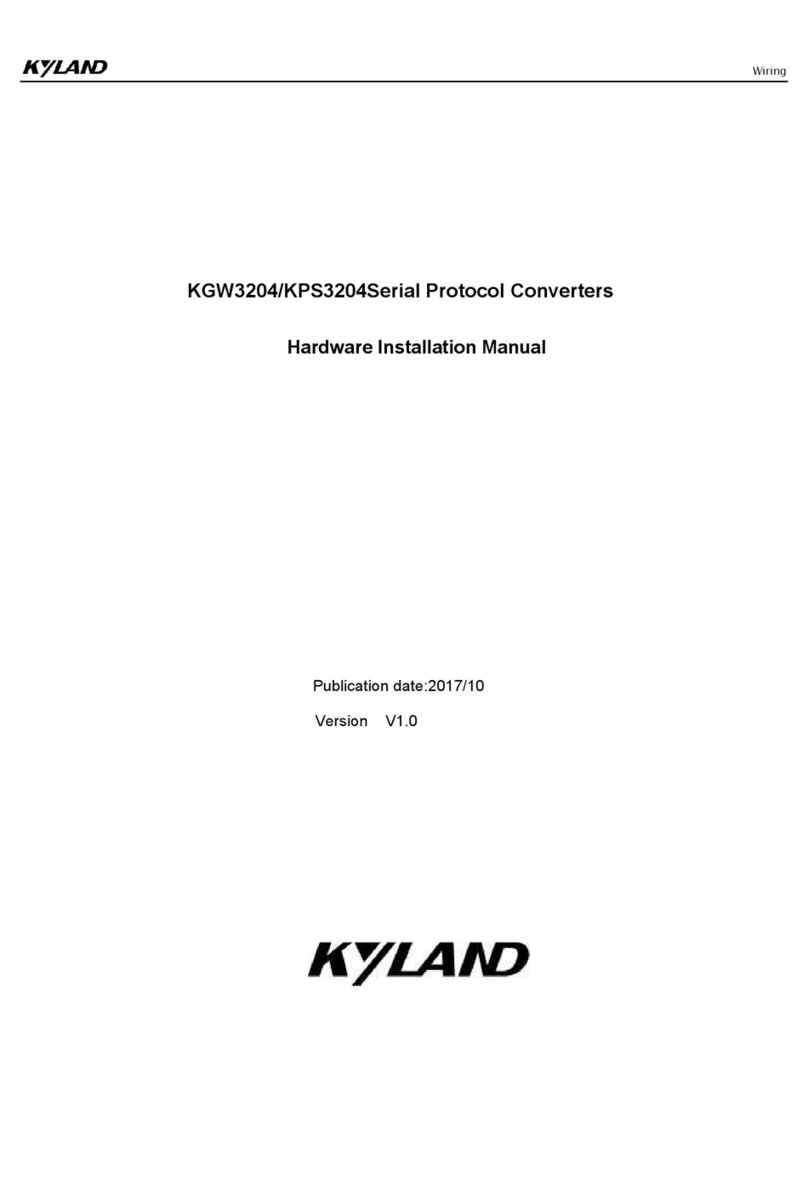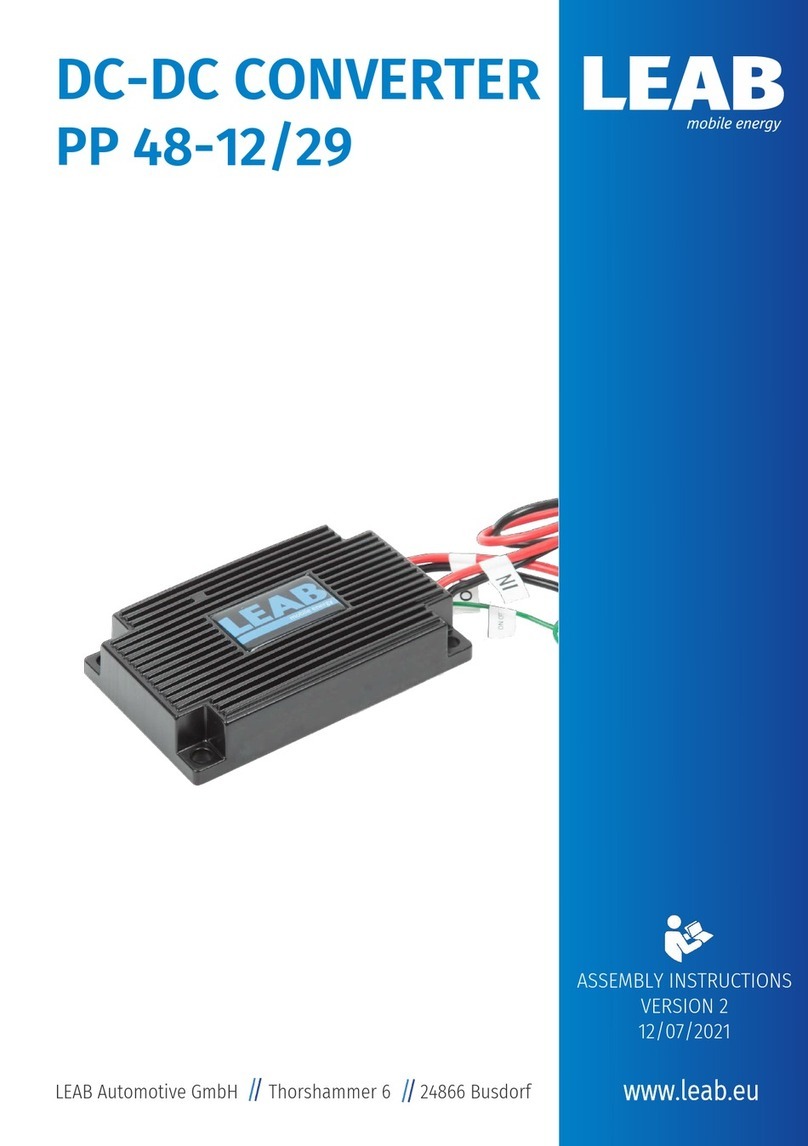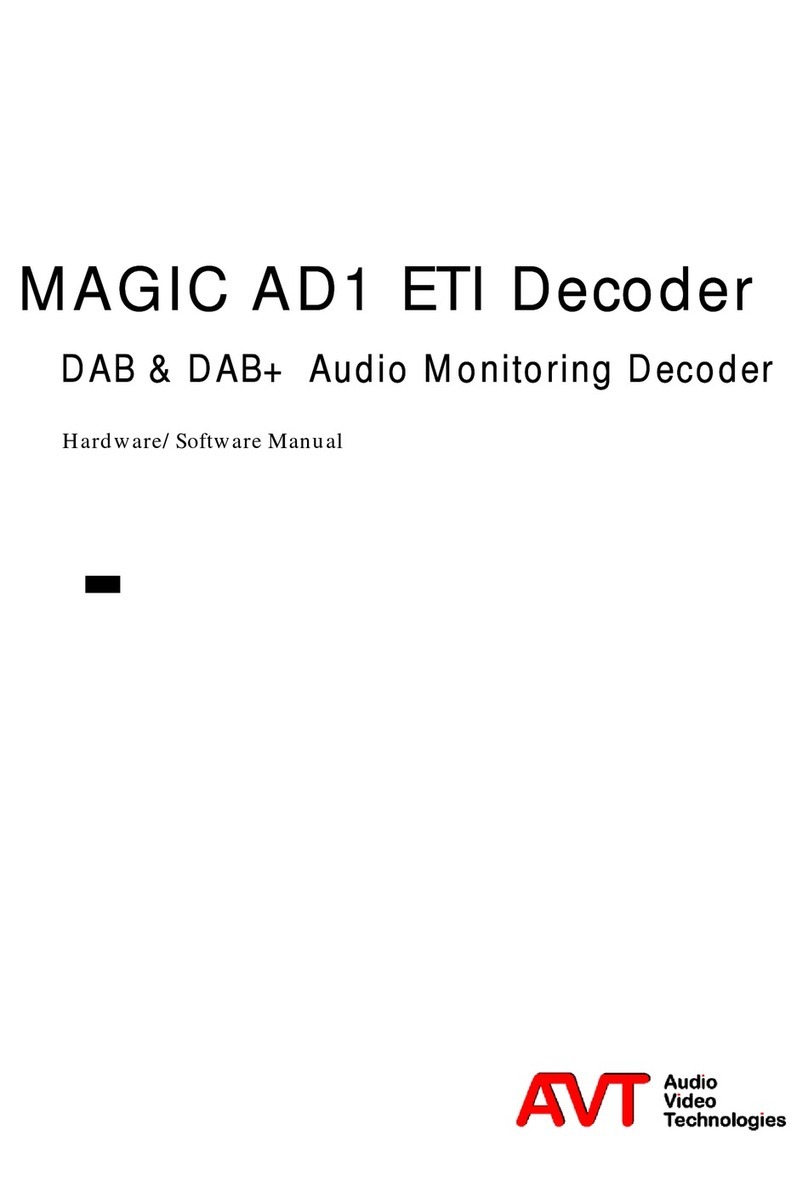Dataforth DSCP62 User manual

Isolated Analog Signal Conditioning Products DSCP
DSCP62 Conguration Guide
Thermocouple-to-DC Current/Voltage
Converter with Relay Output
Description
Each DSCP62 Thermocouple Converter provides a single channel of thermocouple
input which is amplified, linearized and converted to a high-level current or voltage
output. Thermocouple type, measurement range, filter, output type and range,
and fault indication may be configured by dip-switch. An auxiliary relay output
is provided to generate an alarm or act as a thermostat. Power can be applied
directly to the converter’s terminals or through a DIN rail mounted bus connector
accessory, eliminating the need to wire power to each individual converter.
Specifications Typical at TA=+25°C and +24VDC power
Installation rules
This module is designed for assembly on a DIN 46277 rail. Assembly in a
vertical position is recommended to increase the module’s ventilation. Be
sure that no raceways or other objects that compromise aeration are posi-
tioned in the vicinity, and do not position the module above equipment that
generates heat. We recommend positioning the module in the lower part of
the control panel or container compartment. We also recommend rail-type
assembly using the Power Bus connector, which eliminates the need to con-
nect the power supply to each module.
Range and precision of the input
Thermocouple Range Mean error Resolution
J –210 to 1200°C 0.025% + 0.29°C 0.12°C
K –200 to 1372°C 0.025% + 0.4°C 0.17°C
E –200 to 1000°C 0.025% + 0.2°C 0.92°C
N –200 to 1300°C 0.025% + 0.42°C 0.19°C
S –50 to 1768°C 0.025% + 1.34°C 0.66°C
R –50 to 1768°C 0.025% + 1.19°C 0.59°C
B 250 to 1820°C * 0.025% + 1.87°C 0.9°C
T –200 to 400°C 0.025% + 0.31°C 0.13°C
* Up to 250°C, the output is considered equivalent to 0°C.
Dataforth Corporation
3331 E. Hemisphere Loop • Tucson, AZ 85706 USA • Toll Free: 800-444-7644 • Tel: 520-741-1404 • Fax: 520-741-0762 • Email: [email protected] • www.dataforth.com
SD1145 02/11 ©2011 Dataforth Corporation, All Rights Reserved ISO9001:2008 Registered QMS 1
Module DSCP62
Input (selectable)
Thermocouple Type
EN 60584-1 J, K, E, N, S, R, B, T
Measurement range: Depends on
thermocouple type and dip-switch setting
Span: 100°C (min)
Input Impedance 10MΩ
Accuracy ±0.1% (max)
Cold Junction Error 1.5°C (max)
Thermal Drift <120ppm/°K
A/D Conversion 14-bit
Processing Floating point 32-bit
Response Time, 90% Span
(selectable) <25ms (without filter), <55ms (with filter)
CMRR >135dB, referred to power supply side
Isolation 1500Vrms (1 minute), 3-Way
Dip-Switch Configuration Sets input and output ranges, sensor type,
filter and faults
Status Indicators (LED) Internal fault, configuration error,
connection fault
Output (selectable)
Current 0 to 20, 4 to 20, 20 to 0 or 20 to 4mA
Load resistance: 500Ω (max)
Current Output Protection 25mA (max)
Fault Output 102.5% or 105% of full-scale value in
case of over-range
Voltage 0 to 5, 1 to 5, 0 to 10 or 10 to 0VDC
Load resistance: 2kΩ (min)
Auxiliary Relay Output Rated 60mA (max) at 24VAC
Power Supply 19.2 to 30VDC
Power Consumption <600mW (24mA at 24VDC)
Hot Swapping Yes
Environmental
Operating Temp. Range –20°C to +65°C
Storage Temp. Range –40°C to +85°C
Relative Humidity 0 to 90%, Noncondensing
IP Protection IP20
Emissions EN61000-6-4
Immunity EN61000-6-2
Mechanical Dimensions (w x h x d) 0.24" x 3.67" x 4.04"
(6.2mm x 93.1mm x 102.5mm)
Housing Terminal housing for mounting on
35mm DIN 46277
Connections Spring cage clamp
Weight 1.6 ounces (46g)
Auxiliary Output
The auxiliary output is designed to drive an indicator, a relay of greater
power, or the input of a supervisory control system. Through this output the
DSCP62 module can generate an alarm or be utilized like a thermostat. The
normal state of the output depends on the configuration for the fault of the
primary output.
Setting the threshold
The regulation of the threshold is performed through a button located under
the front cover of the module and accessible through the hole using a small
screwdriver.
• Press and release the button. The primary output will start to represent
the value of threshold and the red LED will flash slowly.
• If the button is not pressed again within 5 seconds, the system will
return to standard functioning.
• Each time the button is pressed there is an increase or decrease of the
primary output of approximately 0.2%; the direction of the variation
depends on the configuration of the output.
• If the button is not released but continues to be pressed, a continuous
3% increase starts after 2 seconds.
• When the maximum/minimum value of the chosen scale is reached, the
cycle starts again.
• During regulation of the threshold, the auxiliary output follows standard
functioning, opening and closing as previously set.
• After 5 seconds of no button pressing, the set value is memorized and
the module continues with standard functioning.
SW2.7 Regulation type Fault Standard state Set threshold
OFF Furnace * Upscale Closed (LED ON) Decrease
ON Refrigerator * Downscale Open (LED OFF) Increase
* In case of choice of direct output: 0(4) to 20mA, 0(1) to 5(10)V
Dip-switch SW2.7 details

Inserting module in DIN rail Extracting module from DIN rail
1. Attach module in upper part of rail.
2. Press module downward.
1. Apply leverage using a screwdriver
(as shown in figure).
2. Rotate module upward.
NOTE:
The Power-Bus must be inserted with protruding terminals on the left (as
shown in figure above); otherwise the modules are turned upside down.
Using the Power-Bus connector
Each expandable Power-Bus connector allows insertion of two modules.
Insert Power-Bus connectors into the DIN rail by attaching to upper side of
rail and rotating downward.
Factory dip-switch settings
The module leaves the factory with all dip-switches in the OFF position.
The default configuration is as follows:
Never connect power supply directly to the bus connector on
the DIN rail. Never tap power from the bus connector either
directly or by using module terminals.
!
Thermocouple type J
50/60Hz line rejection 50Hz
Input filter Not enabled
Measurement range 0 to 1200°C
Output signal 4 to 20mA
Output signal in case of open input Toward the top of the output range
Input over-range Output signal is limited to +5% of max
(or –5% of min) with input over-ranged
Auxiliary output threshold 0% of the nominal scale
This configuration is valid only with all dip-switches in the OFF position. If
even one dip-switch is not in the OFF position, all parameters must be set
as indicated in the following tables.
Input filter
SW1 5 10-90% response, 50Hz 10-90% response, 60Hz
Enabled <55ms <55ms
Not enabled <25ms <25ms
Measurement range start
SW1 6 7 8 J type K type R type S type T type B type E type N type
Default * 0°C 0°C 0°C 0°C 0°C 0°C 0°C
0°C 100°C 100°C 100°C 50°C 400°C 100°C 100°C
100°C 200°C 200°C 200°C 100°C 500°C 200°C 200°C
200°C 400°C 300°C 300°C 200°C 600°C 300°C 300°C
300°C 600°C 400°C 400°C –50°C 800°C 400°C 500°C
500°C 800°C 600°C 600°C –150°C 1000°C 500°C 700°C
–100°C –100°C 800°C 800°C –100°C 1200°C –100°C –100°C
–200°C –200°C 1000°C 1000°C –200°C 1400°C –200°C –200°C
* If all the dip-switches are in the OFF position, the default configuration is valid; otherwise the value
of this parameter is 0°C, as for the other thermocouple types.
Measurement range end
SW2 1 2 3 J type K type R type S type T type B type E type N type
1200°C 1350°C 1750°C 1750°C 400°C 1800°C 1000°C 1300°C
1000°C 1200°C 1500°C 1500°C 350°C 1600°C 800°C 1200°C
800°C 1000°C 1300°C 1300°C 300°C 1500°C 600°C 1000°C
600°C 800°C 1100°C 1100°C 250°C 1300°C 500°C 800°C
500°C 700°C 900°C 900°C 200°C 1100°C 400°C 600°C
400°C 500°C 700°C 700°C 150°C 900°C 300°C 500°C
300°C 300°C 500°C 500°C 100°C 700°C 200°C 400°C
200°C 200°C 300°C 300°C 50°C 500°C 100°C 200°C
Thermocouple type
SW1 1 2 3
J
K
R
S
T
B
E
N
NOTE:
The indication means the dip-switch is set in the ON position.
No indication means the dip-switch is set in the OFF position.
50/60Hz line rejection
SW1 4
60Hz
50Hz
Output signal
SW2 4 5 6
4 to 20mA
0 to 20mA
20 to 4mA
20 to 0mA
0 to 10V
1 to 5V
10 to 0V
0 to 5V
Output signal in case of open input
SW2 7
ON: Toward the bottom of the output range
OFF: Toward the top of the output range
Over-range / Under-range Options
(See table below for corresponding values)
SW2 8
ON: Output signal is limited to ±2.5% of full-scale setting with input over- / under-ranged
OFF: Output signal is limited to ±5% of full-scale setting with input over- / under-ranged
Nominal output value
Over- / Under-range limited to
±2.5% of full-scale setting
Over- / Under-range limited to
±5% of full-scale setting
20mA 20.5mA 21mA
4mA 3.5mA 3mA
0mA 0mA 0mA
10VDC 10.25VDC 10.5VDC
5VDC 5.125VDC 5.25VDC
1VDC 0.875VDC 0.75VDC
0VDC 0VDC 0VDC
Dataforth Corporation
3331 E. Hemisphere Loop • Tucson, AZ 85706 USA • Toll Free: 800-444-7644 • Tel: 520-741-1404 • Fax: 520-741-0762 • Email: [email protected] • www.dataforth.com
SD1145 02/11 ©2011 Dataforth Corporation, All Rights Reserved ISO9001:2008 Registered QMS 2

LED indications on front of module
Red LED Meaning Output fault
Fast flashing
Internal fault: power supply not
sufficient, out of range offset or
reference. Error on reading or
writing in flash (at the start or on
threshold setting).
Yes
Slow flashing Dip-switch setting error Yes
Set threshold in progress No *
Steady light
Disconnected thermocouple, out
of range input or temperature
compensation
Yes
Output limiting in progress No
* In this modality the output signal represents the value of the threshold.
Yellow LED Meaning
ON The auxiliary output is closed
OFF The auxiliary output is open
0.2 to 2.5mm2
8mm
Electrical connections
The module is designed for spring cage clamp
electrical connections.
1. Strip cables by 0.8mm.
2. Insert screwdriver in the square hole and press
until the cable lock spring opens.
3. Insert cable in the round hole.
4. Remove screwdriver and ensure cable is tightly
fastened in the terminal.
Power supply
There are three ways to power the DSCP6x series of signal converters.
1. Connect the 24VDC power supply directly to terminals 7 (+) and 8 (-)
of each module.
2. Connect power to one signal converter and use the expandable Power-
Bus connector to distribute power to a maximum of 16 adjacent modules.
The bus can be supplied from any of the modules, but the total current
consumption of the bus must be less than 400mA. Higher consumption
values can damage the module. An appropriately sized fuse must be
connected in series with the power supply.
3. Use the DSCP70 Power Supply Connection Module and the expandable
Power-Bus connector to distribute power to a maximum of 75 modules.
The DSCP70 is designed to protect the modules connected via bus against
overvoltage loads. The bus connector can be provided with power using the
DSCP70 module if the total consumption of the bus is less than 1.5A. Higher
consumption values can damage both the module and the bus. An appropri-
ately sized fuse must be connected in series with the power supply.
1
2
3
4
5
6
7
8
+
-
19.2 to 30VDC
Power
supply
Set threshold Red LED
Yellow LED
Input
The module accepts input from the following types of thermocouples:
J, K, R, S, T, B, E, N.
The use of shielded cables is recommended for the electronic connections
1
2
3
4
5
6
7
8
Output
Input
+
TC
Power
supply
Output: Voltage / Current connections
The use of shielded cables is recommended for the electronic connections.
1
2
3
4
5
6
7
8
Output
Input
Power
supply
+
-
V / I
1
2
3
4
5
6
7
8
Output
Input
Power
supply
AUX
AUX
1
2
3
4
5
6
7
8
Output
Input
Power
supply
+
-
V / I
1
2
3
4
5
6
7
8
Output
Input
Power
supply
AUX
AUX
Auxiliary output
The auxiliary output is designed to drive an indicator, a relay of greater
power, or the input of a supervisory control system.
Dataforth Corporation
3331 E. Hemisphere Loop • Tucson, AZ 85706 USA • Toll Free: 800-444-7644 • Tel: 520-741-1404 • Fax: 520-741-0762 • Email: [email protected] • www.dataforth.com
SD1145 02/11 ©2011 Dataforth Corporation, All Rights Reserved ISO9001:2008 Registered QMS 3
Other Dataforth Media Converter manuals
